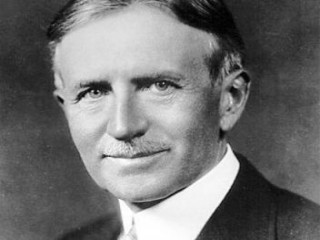
Harvey Samuel Firestone biography
Date of birth : 1868-12-20
Date of death : 1938-02-07
Birthplace : Columbiana, Ohio
Nationality : American
Category : Arhitecture and Engineering
Last modified : 2011-06-03
Credited as : Industrialist, Firestone Tire and Rubber Company, big five in rubber
The American industrialist Harvey Samuel Firestone organized the Firestone Tire and Rubber Company, a leading firm in the rubber industry.
Harvey Firestone was born at Columbiana, Ohio, on Dec. 20, 1868, the son of a prosperous farmer. During the 1890s he held various positions in the buggy industry. In 1896 Firestone established a tire company; it was sold 3 years later. In 1900 he founded the Firestone Tire and Rubber Company in Akron, Ohio, which was already a center of the tire industry catering to the bicycle.
Now Firestone shifted his attention to the automobile industry and the pneumatic tire, which replaced the solid tire. He obtained a substantial order from Henry Ford in 1906, and this became the foundation of a business and personal relationship. Firestone became one of the "big five" in rubber: the others were Goodyear, Goodrich, United States Rubber and Fisk.
Firestone responded to the 1920-1921 business decline by reducing prices and refusing to participate in a price agreement with his competitors. Wages were cut in an effort to trim costs (like most mass production industries, the rubber industry was not yet unionized). In 1923 Firestone brought out the balloon tire, a product innovation which was widely copied.
The rubber tire industry was at this time completely dependent on imported raw material. The price of rubber, like that of most raw materials, fluctuated greatly: it rose during World War I and went down during the postwar depression. Under the sponsorship of Great Britain, which owned colonies producing much of the world's rubber supply, a short-lived cartel was started in 1922 to raise the price of rubber and restrict its output. Complaints from consumer nations arose, particularly from the United States, which, in the midst of an automobile revolution, was the largest consumer of rubber. In response, in 1924 Firestone and Henry Ford began to develop their own rubber supply in Liberia, Africa. The size of Firestone's Liberian rubber plantations made him an important factor in the economic life of that country. In 1930 a League of Nations inquiry into the slave traffic exonerated Firestone's labor policy there.
Firestone died on Feb. 7, 1938, in Miami Beach, Fla. His family-controlled company concentrated on a single line of products—rubber tires.
















